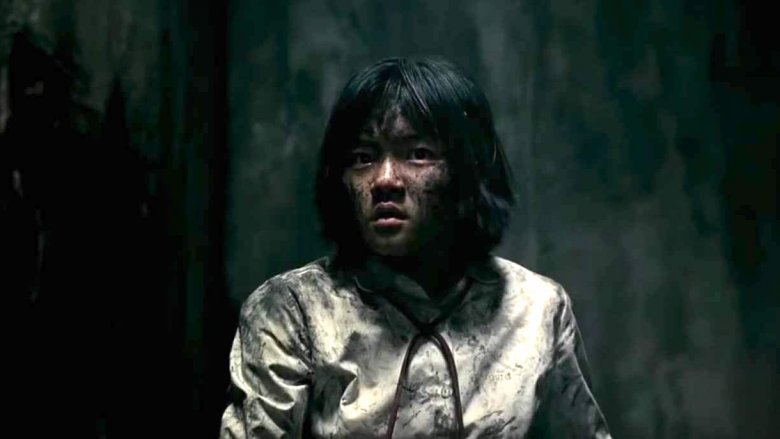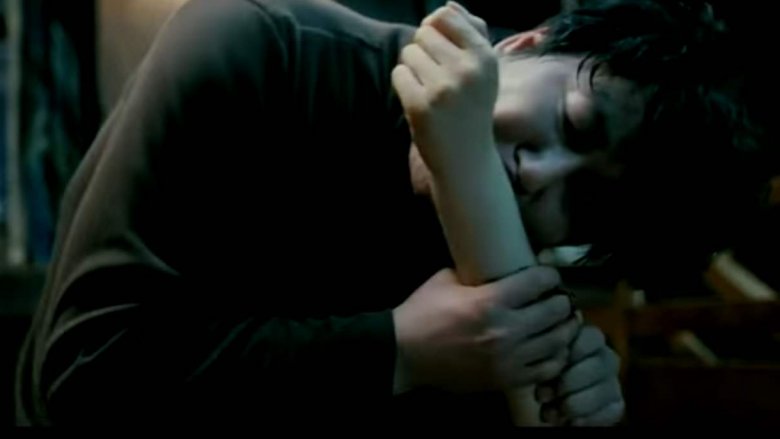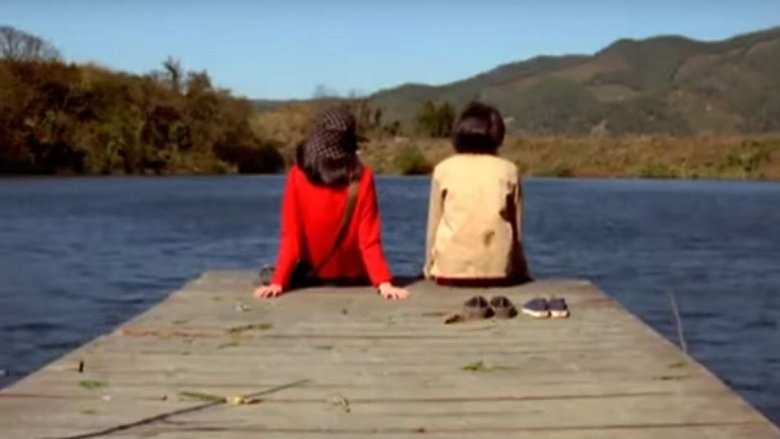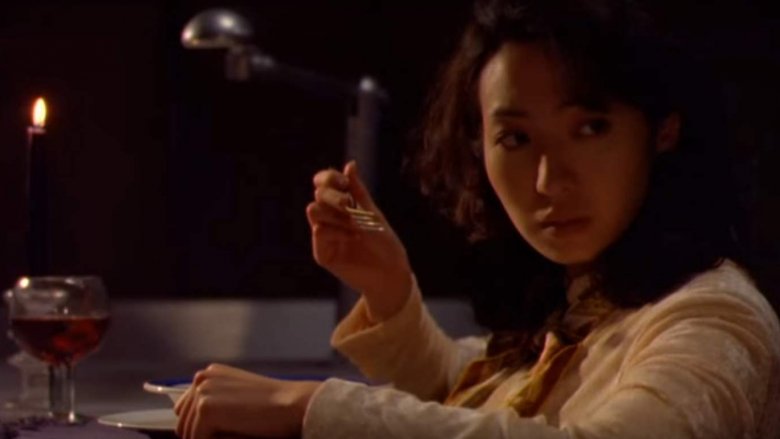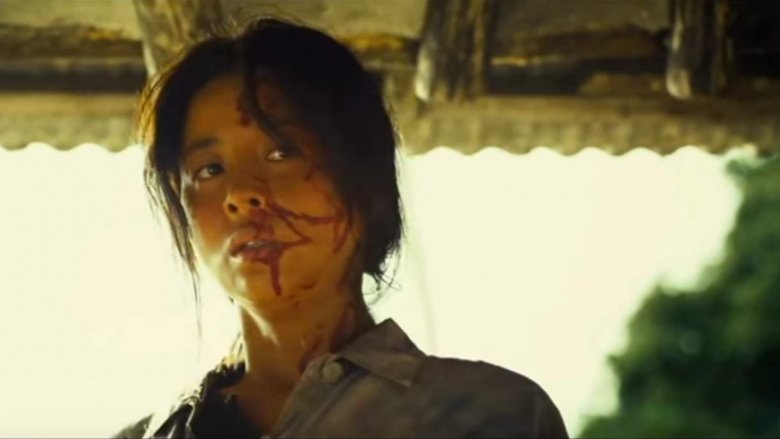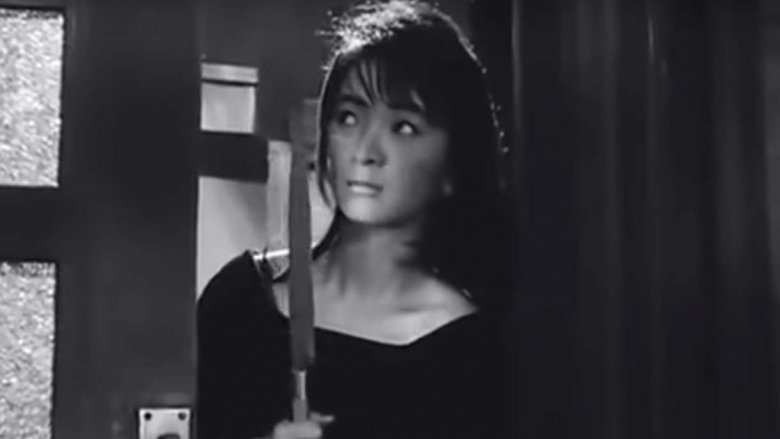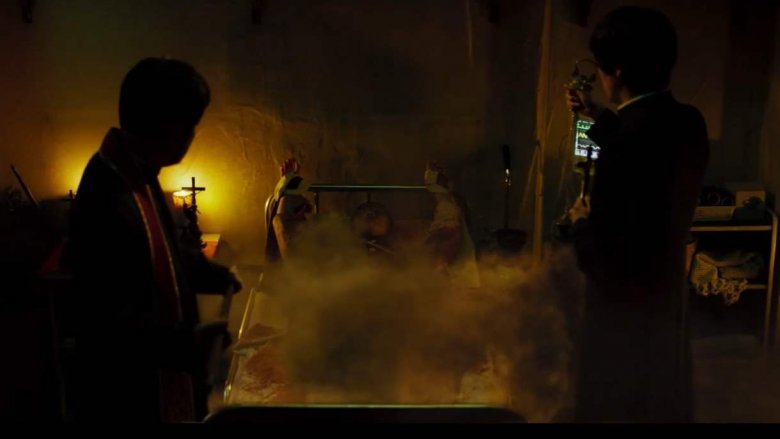Underappreciated Korean Horror Movies You Missed
Summer is the season for horror films in South Korea, based on the simple notion that fear's chill takes the edge off the heat and humidity. It's not bad logic. While you might not be into K-pop dance troupes or their predictable and formulaic drama series, the South Korean film industry is stuffed with talent, expertise, and a penchant for creepiness. Here are some freaky films from the Land of Morning Calm sure to fill your nights with terror.
Thirst (2009)
After gaining fame for geopolitical thriller Joint Security Area and the gorgeously violent Vengeance trilogy, in 2009 director Park Chan-wook turned to horror with his own take on the vampire mythos. In the decadent era of Twilight fandom, Thirst (Bakjwi) was a timely panacea. The film, which won the Jury Prize at Cannes, stars Song Kang-ho as priest Sang-hyeon who agrees to participate in a medical experiment to develop a cure for a mystery disease sweeping Africa. As you might expect, he turns into a vampire instead.
Sang-hyeon struggles with his convictions as a man of God and healer while beset by the temptations of his new condition. This gets more difficult after he becomes involved with and turns Tae-joo (Kim Ok-bin), the exploited and abused wife of a childhood friend. Unlike him, she feels no guilt and revels in her new bloody lifestyle. Their psycho-sexual dynamic drives the film toward a brilliant, wordless conclusion.
Dark humor, Catholic themes, and exploration of perverse sexuality pervade the film, a loose adaptation of Émile Zola's Thérèse Raquin, while avoiding many tired tropes. Director Park deliberately removed elements of vampire lore that you might otherwise expect in a vampire film with heavily Catholic themes, such as vampiric aversion to the crucifix and garlic. As Park told Ain't It Cool News, "They put garlic into everything in Korea. So, if you're scared of garlic, there's no drop of blood you can feed on in Korea."
I Saw the Devil (2010)
Friedrich Nietzche said, "Beware that, when fighting monsters, you yourself do not become a monster." Never has this been better illustrated than in the 2010 Kim Jee-won film I Saw the Devil. Lee Byung-hun (an actor whose range has been criminally misused by Hollywood) stars as Kim Soo-hyun, an agent of the National Intelligence Service desperate to capture serial killer Jang Kyung-chul (played masterfully by veteran actor Choi Min-sik) who murdered Soo-hyun's fiance and numerous other women. Soo-hyun is not out for justice, but vengeance: he torments Kyung-chul with repeated captures and releases rather than simply handing him over to the police. This creates a fascinating dynamic where the antagonist is placed in the position of victim, while our hero slowly transforms into a monster nearly as dreadful as the man he is chasing.
Much of the imagery and themes of the film could easily have been reduced to exploitative shock horror in the hands of another director, but the blood and violence is tempered and elevated thanks to a tight script, beautiful cinematography, strong characters, and a resonant emotional heft. There are even elements of morbid humor and absurdity, such as when Kyung-chul takes refuge with friend Tae-joo (Choi Moo-sung), a goofy character who would be endearing if he didn't also happen to be a cannibal serial killer. That dynamic raises some serious fridge logic questions: in the world of I Saw the Devil, are all serial killers buddies who help each other out?
A Tale of Two Sisters (2003)
Kim Jee-woon's A Tale of Two Sisters tells the sad and terrifying tale of sisters Su-mi (Im Soo-jung) and Su-yeon (Moon Geun-young), forced to contend with a sinister step-mother and a series of bewildering and unexplainable events. The movie deftly combines supernatural dread with family dysfunction and mental deterioration, all captured with a disturbing and discombobulating film style. The effect is unsettling, and viewers could be forgiven for thinking the whole thing is just a mind-screw. The shocking (but logical) conclusion clears things up and the film in general rewards future viewings.
The film is based on Joseon era folk tale Janghwa Hongryeon jeon, which has been adapted for film a number of times. In Kim's hands, the old-school folklore creepiness is accentuated by canny use of purely cinematic techniques. As Kim said himself, "I think a movie is at the borderline between the reality and some other world. For me, expressing the real world with the real language is not very fun. But, expressing the real world with fantastic, film language is more fun. I think that film is a door from the real world to the other world, to the other side...And ultimately, film is about digging from another world into what's going on in the reality."
The movie was remade in the U.S. as The Uninvited in 2009, but was poorly received. It superficially replicated the visuals of the original, but simplified the narrative and stripped away its ambiguity and resonance.
301, 302 (1995)
This film might not seem like a horror film at first glance, more of a mystery or drama, but the ending justifies its inclusion in the genre of terror and dread. 301, 302 tells the story of two obsessive-compulsive neighbors: lustful chef Song (Pang Eun-jin) and a sexually repressed and anorexic writer Yun (Hwang Sin-hye). They begin a tumultuous relationship as Song becomes obsessed with getting Yun to eat her meals, while Yun refuses.
Through flashbacks, and eventual confession, we learn their painful histories, which are the source of their contemporary psychological torments. Together, they come upon a unorthodox solution to the problems in their relationship. No spoilers, but there is a reason the first scene of the film involves an investigator questioning Song on the disappearance of her neighbor.
The film was remade in Canada as Compulsion in 2013, starring Heather Graham and Carrie-Ann Moss, which didn't garner much positive attention. The original is available online through the Korean Film Archive.
The Host (2006)
Do not confuse this for the justifiably forgotten 2013 Stephenie Meyer adaptation with the same (English) title. Bong Joon-ho's 2006 film The Host (Gwoemul) was a satirical and heartful monster movie starting with a bang and shifting tone several times. The premise is based on the factual incident of a U.S. military mortician who ordered his staff to dump formaldehyde down the drain and onward to the Han river, caused a backlash over potential effects on the environment and public health. In Bong's film, a similar situation leads to a mutated, man-eating, rampaging monster crawling out of the Han.
While borrowing elements from Hollywood and the Japanese kaiju eiga film tradition, The Host reflects the cultural ethos and sensibilities of South Korea, particularly struggling and imperfect common man. Protagonist Gang-du (Song Kang-ho) is lazy and alcoholic but loves his family and struggles to keep them together. When his daughter is taken by the monster, he and his family are forced to overcome their weaknesses to save her despite the callous negligence and disingenuous attitude of local authorities who invent a false viral outbreak story to cover up the truth and keep the population under control.
While some viewers may be taken off-guard by the whiplash shifts between humor and terror, satire and tragedy, The Host is a valuable watch in order to understand the combined pathos and hopefulness in many ordinary Korean people. And besides, the scene when the monster first shows up is just bananas.
Train to Busan (2016)
Director Yeon Sang-ho worked in animation dealing with gritty depictions of Korean social issues. In 2014 and early 2015 he produced Seoul Station, a zombie tale riddled with themes of class hatred and social alienation. During production, he began to wonder what would happen if one of the zombies boarded a train bound south for Busan, which became the basis for his first live-action film, Train to Busan (Busanhaeng).
With a much larger budget than his previous films, Yeon embarked on a project with a theme well-worn in the West but rarely explored in Korean cinema. The film stars Gong Yoo as a distant workaholic fund manager on board a high speed train with his daughter bound for Busan to visit her mother. Zombies attack just as the train is leaving, setting off a struggle to survival as the virus spreads through the cabins. The film combines cynical social commentary, flashes of humor and heart-felt performances with action sequences and waves of quick, ferocious undead. Like many of the best zombie films, the threat comes as much from the inhumanity of human beings as from the zombies themselves.
While the film hews a little too close to genre conventions and stock characters during the second half, it remains a great ride and worthy addition to the zombie horror canon. Actor Gong Yoo has reportedly been in talks with the director about a sequel with an unconventional point-of-view, but beware spoilers before looking it up.
Bedevilled (2010)
Korea is well-known for its revenge films, but for this example viewers be warned, the depictions of violence, sexual assault, and sheer human awfulness are intense.
Bedevilled (Kim Bok-nam salinsageonui jeonmal) tells the story of Hae-won (Seong-won Ji), a loan officer and truly awful woman who cares only for herself. After being forced to take a holiday after assaulting a colleague, she decides to visit an old friend, Bok-nam (Yeong-hie Seo) who lives on the rural island of Moo-do. While Hae-won has been ignored her letters for years, Bok-nam considers Hae-won her only friend in the world. Upon arriving on the island, Hae-won discovers Bok-nam is being kept as a slave by the few inhabitants on the island: sexually abused by the men and castigated cruelly by the women. And yet, Hae-won still cares little for Bok-nam's suffering, which ultimately sets off a course of events leading to a tragedy and righteous massacre.
The movie was the debut feature by director Yang Chul-soo, a reaction against the discrimination against women in his society inspired by horrifying real incidents. While some of the scenes may seem gratuitous to some Western audiences, the depictions of cruelty and callousness are a reflection of very real issues. As a film, it can be viewed as an exceptionally well-made and acted movie with slowly rising tension leading to a shocking conclusion of bloody mayhem, an intelligent and fearless look at the depths of human iniquity.
The Housemaid (1960)
In the early 1960s, South Korea was recovering from Japanese occupation and the Korean War, and a long way from economic miracle. Their film output was melodramatic, intended for a local audience. Yet Kim Ki-young's The Housemaid stands up today as an exemplary psychological horror film.
The film tells the story of a upper middle class family who move into a two story home and hire a housemaid to help maintain it. What follows shifts from subtle social satire to psycho-sexual manipulation and revenge. The cinematography is alienating and claustrophobic, the performances subtle, and the plot dark and tense. The Housemaid was a reflection of the anxieties caused by rapid social and economic changes in Korean society, as well as shifts in gender roles. According to contemporary reports, during screenings housewives stormed out of the theater or hurled abuse at the eponymous housemaid on screen over her misdeeds.
This film could easily have been lost to history, as many early Korean celluloids were destroyed to make sturdier straw hats in the 1960s, and many that survived were later consumed in a chemical process to remove silver. Two reels of The Housemaid were lost for decades until archived copies from the international film festival circuit were discovered with obnoxious burned-in English subtitles. Today, the restored film is available, and is a worthwhile watch, not only because it remains entertaining and creepy a half-century later, but also because its survival is a near miracle.
The Priests (2015)
Director Jang Jae-hyun's film The Priests (Geomeun Sajedeul) owes a debt to The Exorcist, but makes the story its own. The story deals with the case of a young girl who suffers a hit-and-run accident, after which ill-reputed Catholic priest Kim Bum-Shin (Kim Yun-Seok) believes she has been possessed by a demonic spirit. He enlists the help of young Deacon Choi (Gang Dong-won) who is initially excited, but becomes suspicious of the older priest.
The performances of the two actors are outstanding, but the writing in the early and middle of the film leave a bit to be desired. What makes the movie worth the price of admission is the climactic exorcism scene, a supremely creepy and effective horror scene incorporating practical effects and superb cinematography. It is interesting how Eastern philosophies intermingle with the ostensibly Catholic worldview of the film: references are made to the Buddhist Feast of the Dead, yin and yang energy, and the young deacon is chosen on the basis he was born on the year of the tiger.
The film was based on a 2014 short film by the same director, 12th Assistant Deacon. Some believe the earlier film told a more complete and efficient story, which may make it a better option for viewers short on time who are able to track it down.
The Wailing (2016)
The Wailing tells the tragic struggle of Jong-goo (Kwak Do-won), inept police sergeant in the damp rural town of Gokseong. The film begins light with bumbling cops trying to deal with bizarre murders and mysterious sickness, officially explained as the result of madness-inducing mushrooms though suspicion also falls on a weird old Japanese man living in the mountains. Following increasingly bizarre events, Jong-goo's daughter falls under the spell of supernatural evil, with young actress Kim Hwan-hee performing masterfully disturbing scenes of child possession. Jong-goo is forced to confront inexplicable terrors in the struggle to save her.
The film plays fast and loose with the occult and supernatural traditions of different cultures and gleefully subverts genre conventions, giving the audience the same sense of unpredictability as Jong-goo. The unfamiliar nature of the shamanic rituals in an exorcism scene adds to the unease, as does the fact just because something acts like a zombie doesn't mean a head-shot kills it.
Be warned, this film refuses to wrap up neatly, leaving the true source of the supernatural mayhem ambiguous. According to director Na Hong-jin, "I mulled over the ending and decided I had to leave it open. It was something that I couldn't dare speak of. This result came from multiple interviews I had with leaders from several different religions. It is up to the audience to interpret the film. They can interpret it any way they like. You can take it in as it is, or you can twist it."
